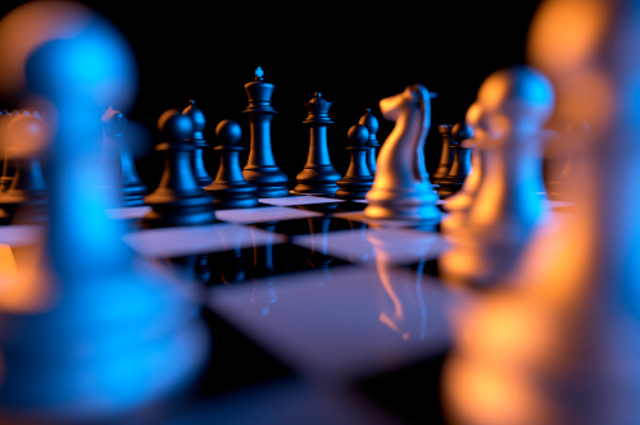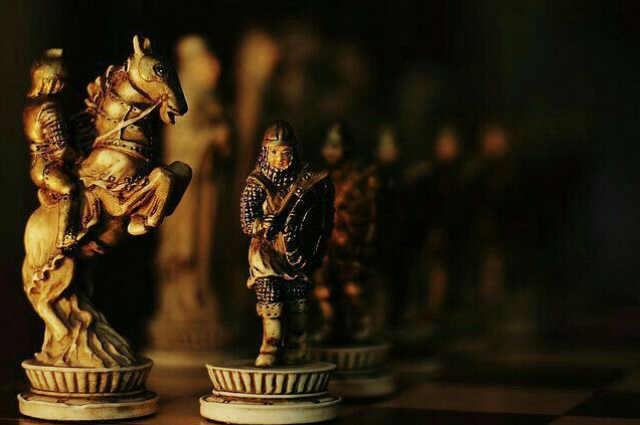
The scene is intense as the opposing army steadily paves its way to the helpless king, who knows his minutes are numbered. He is defenseless, with all barriers rampaged, strategies failed, and his army men pulverized and flung across the battlefield.
“Queen to E3” Commands a voice facing him, shattering his last, small hope; His worst fear is confirmed. He watches with a muted horror as the queen moves forward through the steps a few blocks on his left, knowing that she’d stop at the spot where both their paths intersected. After what seems like an eternity, the queen halts, turning a quarter, and faces him. Her face shows no emotion, no mercy towards her victim. She resonates in a hollow, monotonous tone, the 2 words that stab him, long before her scathing blade does.
‘Check-Mate’
Overview
So, I just gave you another of the plenty reasons it wouldn’t do it justice to call chess just a ‘Game’. Chess is an abstract strategy sport that pushes to broaden horizons, get creative, and deduce innovative techniques to reach goals. It's played on a square chessboard comprising 64 squares arranged in an 8 by 8 grid setup. Each player controls sixteen pieces (One controlling the white pieces, and the other controlling the black ones). Both armies comprise a king, a queen, two rooks, two knights, two bishops, and eight pawns. The aim is to checkmate the rival king, whereby the king is under immediate attack and has no escape possible.
But that's how we comprehend chess today. Chess was an evolution of many rules and patterns across the world. It went through a long history of multiple changes and theory flips until it came the way we see it presently.
Origin

The origin of chess traces back to the sixth century. Surprisingly, (or maybe not!) Those bases can be mapped out in Ancient India, with the youngest prince of the Gupta Empire killed in a war.
His brother managed to come across a way to recount the battle sequence to the grieving mother. He set up an 8 by 8 Aushtapada board -used for some other popular pastimes and fashioned it into a display with 2 unique features- ‘A path style defined for each piece, and a king whose fate determined the outcome'.
Thus, a new game emerged. It was named Chaturanga, Sanskrit for 'Four Divisions'. But it was when it spread to the Persian empire, that it acquired the name of the most popular brain game, as we know it today. Chess was derived from Shah meaning king, and rose another unique term, ‘Checkmate’ from Shah Mat, or the king is helpless.
Ever spreading to different regions of Asia, quite many local variants developed. In China, chess pieces were placed on the intersections of the squares, rather than inside them. The Mongols viewed an 11 by 10 board with safe squares labeled Citadels, while in Japanese Shogi, the captured pieces could be used by the opposing. But it was in Europe when chess took upon its modern form, the one which familiarizes us.
Over time, chess rose above the role of a tactical simulation, it emerged as a device of poetic imagery. Diplomats and courtiers used chess terms to portray political power, used as an allegory for different social classes performing roles. With another change, the relatively weaker chess piece of an adviser was recast as a more powerful queen, possibly inspired by the recent surge of strong female icons. This change accelerated the game’s developmental pace; Other rules were popularized, patterns deduced, and endgames created, chess theory was born.
With the Enlightenment Era, chess was seen as an expression of creativity, encouraging bold moves and dramatic plays. This ‘Romantic' style reached its peak when checkmate was managed despite losing a queen and both rooks.
While all artists are not chess players, all chess players are artists. - Marcel Duchamp
With international competition, chess took upon new geopolitical importance. During the cold war, the Soviet Union devoted great resources towards cultivating chess talent, claiming victory over the championships for the rest of the century.
But the player who would truly shatter the victorious beliefs of the Russian community was not a person of a different nationality, but an IBM computer called Deep Blue.
Chess-playing computers had been developed for decades, but deep blue's triumph over Garry Kasparov in 1997 was the first time a computer had ever managed to defeat a sitting champion.
Presently, chess software is capable of consistently defeating the best human player, which just proves the aid of technology in changing the game's growth.
Nowadays, chess is played across the world with just the amount of Enthusiasm it was meant to offer when crafted.
Playing chess provides a plethora of benefits, diverse to all age groups. Chess helps exercise both sides of the mind (Visual and analytical), broadening horizons. It’s a game that brings people together, maximizes focus, and enhances creativity. Some even seek chess as an educational tool, to build problem-solving skills and boosts confidence.
Chess taught me how to cherish wins and genuinely accept losses. It taught me how a single wrong action could lead to drastic consequences and make the tables turn. Most importantly, I learned to remain calm under immense pressures, all thanks to the times I played chess under strict time limits and the need to make critical decisions while trying to avoid panics on twists and turns.
There’s a lot more out in there in the sixty-four checks of black and white, ever open to those who are ready to explore. The only need is a free fresh mind and the ability to forethink, and you’re all set to get the best of the royalty sport.
Life is like a game of chess, to win you have to make a move. - Albert Einstein
